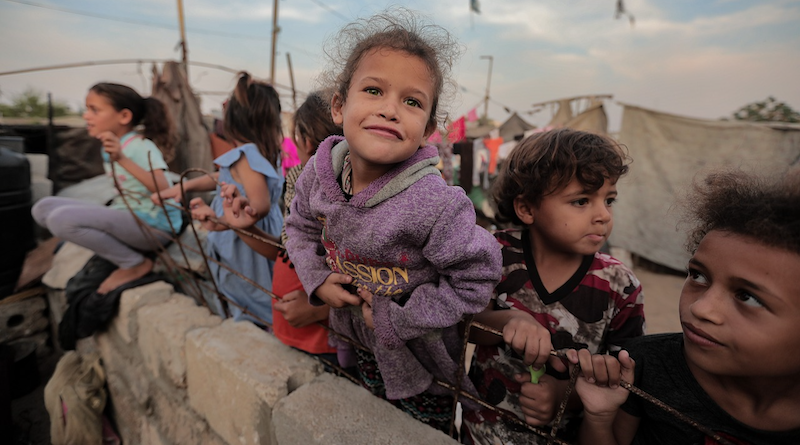Understanding Gaza’s Ceasefire Complexities – OpEd
By Dr. Sahibzada Muhammad Usman
The fragile truce in Gaza, one of the world’s most violent regions, underscores how difficult peace is to achieve. Foreign authorities helped this accord cease Gaza Strip bloodshed for now. It also highlights long-standing issues and humanitarian concerns that need to be addressed. Even while the ceasefire is positive, bloodshed continues. This illustrates how fragile peace is in this lengthy struggle.
The intricate Israeli-Palestinian battle must be examined to comprehend the present peace. This century-long battle stems from territorial, national, and religious disputes. Competing property claims are linked to historical wrongs and a never-ending cycle of bloodshed. Gaza has been a battleground and subject of various military interventions and sieges. The region is densely populated and one of the most bombarded on Earth. Many escalations have made peace and stability unattainable. Past ceasefires have helped temporarily but frequently collapsed, escalating the battle. People paid a high price. Wars have shaped several generations, with little opportunity to escape the terror and stress. The world community is frequently startled to see successive peace initiatives fail, putting Gazans in continual dread and misery.
Qatar, the US, and Egypt helped negotiate the latest ceasefire arrangement, which is a convoluted web of politics and a desperate yearning for peace. The pact asks for more than weapons down to halt the violence. This involves prisoner exchanges and first moves towards settling larger issues. The quiet has been tentatively embraced by Hamas and Islamic Jihad in Gaza. However, Israel must fulfil the laws to get their promise. This conditional acceptance illustrates how mistrustful and antagonistic Israelis and Palestinians have been for decades.
Gaza still sees murder and death despite the ceasefire. Bombing and gunfire during peace negotiations provide a dismal picture of future issues. A Jabalia camp home bombing killed 52 family members. This highlights the fragility of peace efforts in the region. The humanitarian crisis is massive. Unfortunately, nearly 4,700 children and women are among the 7,000 missing. This loss has severed family and communal relationships, causing generations-long trauma. All Gaza’s hospitals are in horrible shape, as state media immediately requested medical supplies. The war and bombing have damaged hospitals, making it hard to treat wounded and ill patients. The truce has brought relief and cautious optimism worldwide.
The number of deaths in Gaza is unimaginable. More than 5,300 children have sadly died, which is a shocking 40% of all the people who have died. During her recent trip to Gaza, UNICEF Executive Director Catherine Russell gave a sombre message to the UN Security Council. In it, she talked about how this war has had a huge effect on children, who have been through the worst of it. It’s impossible to know how much suffering these kids have been through mentally. It’s possible that war and loss will always leave scars on the lives of many people who have been through them. The international community knows how important it is to meet the short- and long-term needs of these young people right away, but it will be a long and hard road to recovery. After seeing the destruction in southern Gaza, UN Secretary-General Antonio Guterres has called for Israel and Hamas to reach a deal right away so that prisoners can be freed and the fighting and bombing in Gaza stops. His call shows how horrifying the scenes he saw were and how urgently something needs to be done.
International leaders have been mixed emotions in response to the peace deal. They are both relieved and determined to see it through. As a major player in international relations, the United Nations has promised to play a key part in keeping the peace in place. But there are big problems to solve, and the UN’s work needs to go beyond just ending the fighting right away. The World Health Organization is glad about the truce because it could help Gaza’s already troubled health care system. Hospitals and other medical services are straining to meet demand after many individuals were injured. Although it offers them optimism, the ceasefire doesn’t address their medical requirements. They remain in horrible straits. The UN Health Organization chief underlined the need of continuing to provide medical treatment in a speech. Ismail al-Hammada, chairman of Gaza’s government media office, has expressed concerns over Israel’s actions. He called these “crimes” on the northern Donation Hospital and stated Israeli soldiers still controlled Al-Shifa Hospital. These claims show that the ceasefire is merely a step towards peace, not safety and stability. The Gaza truce underscores how difficult it is to create peace in an area with historical grudges, convoluted politics, and deep dislikes. The unstable balance of power in the region is shown by the constant cycle of fighting and peace talks.
Though the truce isn’t very strong, it holds the promise of a future without war and pain. People in Gaza have been through unbearable suffering and deserve more than a short break. They deserve permanent peace, which can only come from solving the reasons of the conflict. Peace talks are a good start, but the truce is not the end goal. The international community must stay committed to helping the deal be put into action and making sure it grows into a full peace plan. The children, the lost, the hurt, and the mourning have all said they want nothing less. Gaza’s unclear future is up in the air, but it is one that can be changed by the strong desire for peace among people and by the cooperation of all countries. There will be a lot of problems along the way, but we have to get through them because the option is to go back to the terrible cycle of violence that has been going on in this area for too long.

